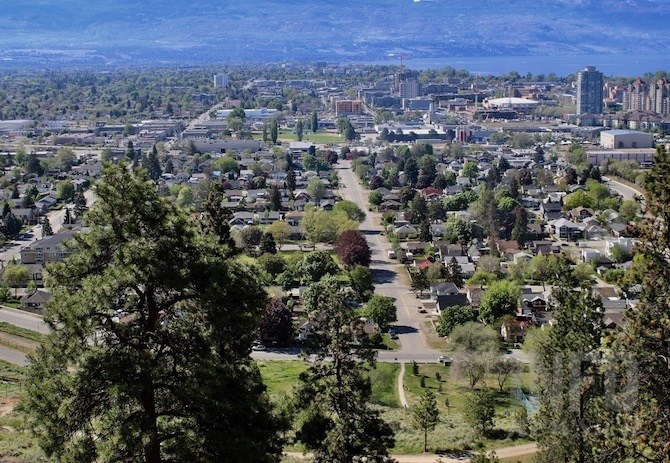
This view from Knox Mountain Park shows the small residential area at the foot of the mountain with the industrial area and downtown high rises.
(ROB MUNRO / iNFOnews.ca)
May 24, 2019 - 6:00 AM
KELOWNA - Snuggled against Knox Mountain, Kelowna's North End is a single-family neighbourhood that’s slowly being revitalized.
“We love it here,” long-time resident Miriam Van Leening said. “We have the mountain behind us. No tall buildings looking down into our backyard and we’re right by the lake.”
She and her husband bought their home on Broadway Avenue, across from Knox Mountain Park, in 1982. It was built in 1946 and, at only 750 square feet, typical of what was available in the neighbourhood. Over the years, they’ve expanded the house to 2,200 square feet, including a front extension in order to have a view of Okanagan Lake.
Compared to some of the changes in the neighbourhood, the Van Leenings property seems modest.
Next door is a two-storey house that was finished in January 2018 and carries some of the same design features on a much larger scale.
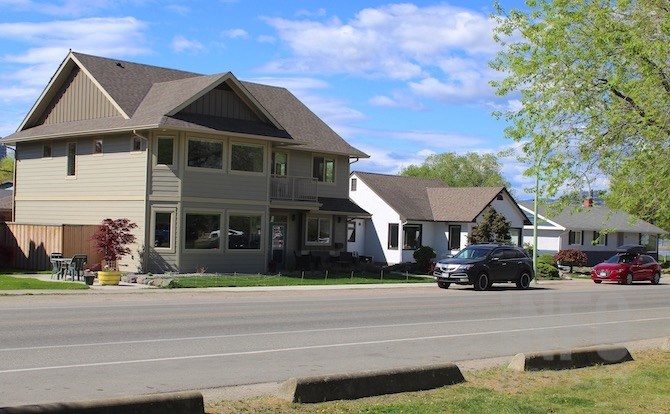
The Van Leenings live in the middle house in this photo. They don't mind the big new house on the left since they built it.happens next door.
(ROB MUNRO / iNFOnews.ca)
“We like it,” Van Leening said, of the house they built for family members.
The Van Leenings also own the small house on the lake side. It’s a standard 1960s style rectangular house and they rent it out. Van Leening does the yard work, keeping the plants low to preserve their view.
These three houses show how the North End is evolving. The neighbourhood was created by Second World War veterans who were given grants to help them build houses, although some weren’t built until the late 1950s or early 1960s.
Many of the new and renovated homes reflect “character” design of the original neighbourhood. But there are exceptions.
The most dramatic example is just around the corner from Van Leening on Ellis Street, a block or so to the south. There are two massive new homes, the newest of which is a bright white, flat-topped home that virtually fills the lot. Van Leening says two more will be built to the south.
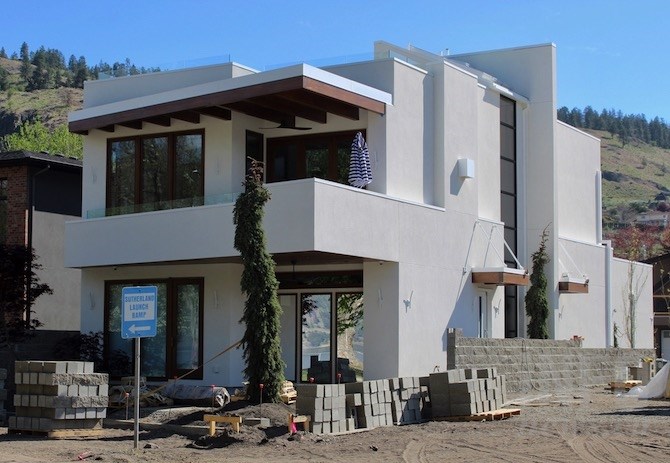
This is an example of a more modern style of house.
(ROB MUNRO / iNFOnews.ca)
“We cannot keep (the neighbourhood) this way – so low,” she said, noting that more people are working from home, need home offices and want more space.
She also said there are many carriage houses in the neighbourhood, so it is increasing in density like other areas of the city.
Since there’s very little rezoning being done in the neighbourhood, it’s up to the individual property owners to decide what style of house to build.
“Every one of them meets the city zoning bylaw for setbacks and density and height,” Terry Barton, the city’s Urban Planning Manager told iNFOnews.ca. “But how you go about that in terms of the architectural form varies. Somebody may want a very fancy modern house and someone else may want a small traditional house. So, you get a bit of an eclectic feel to it.”
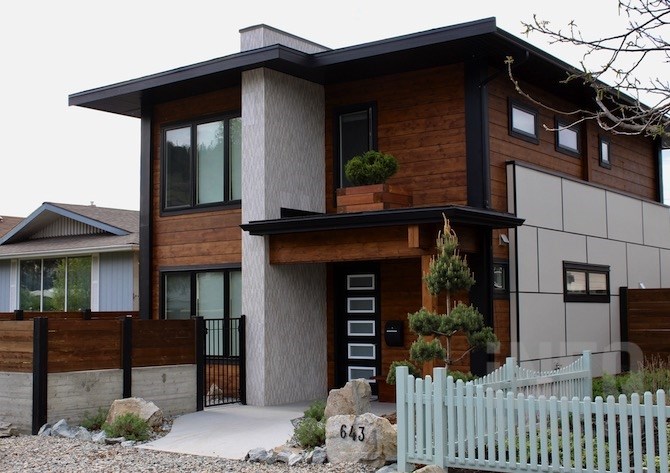
This home may have a modern look, but does it fit in with the North End character?
(ROB MUNRO / iNFOnews.ca)
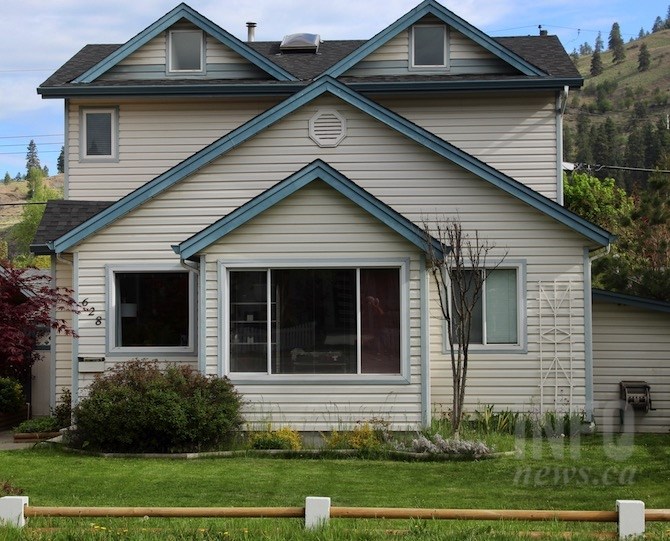
Or is this style more fitting with the neighbourhood?
(ROB MUNRO / iNFOnews.ca)
The changes in the North End are different from what is happening, for example, in the nearby residential neighbourhood south of Clement Avenue.
There, the city is actively encouraging increased density. Not only have there been a number of rezonings for apartment buildings, but the city has created what’s called the RU7 zone. It allows for up to four housing units on each single-family lot (compared to two in the North End).
Under that zoning, if there are more than two units per lot, a development permit is required. That gives the city some say about the design of the buildings.
That zone is not approved for the North End so, for now, those 20 or so blocks quiet blocks of housing will continue to redevelop slowly.
But that could change.
The price of industrial land is skyrocketing in Kelowna so the industrial buffer between the North End and downtown could put pressure on the residential area, especially on Bay Avenue where a narrow lane is all the separates housing from industry.
To the east is the Emil Anderson property where an application has been made for a unique blend of residential and industrial buildings. The company is still waiting for final approval from the city.
The other potential change is the massive Tolko mill site. As long as it continues to operate, the mill’s noise, traffic and impact on Sutherland Bay serves as a deterrent to higher density development in the North End.
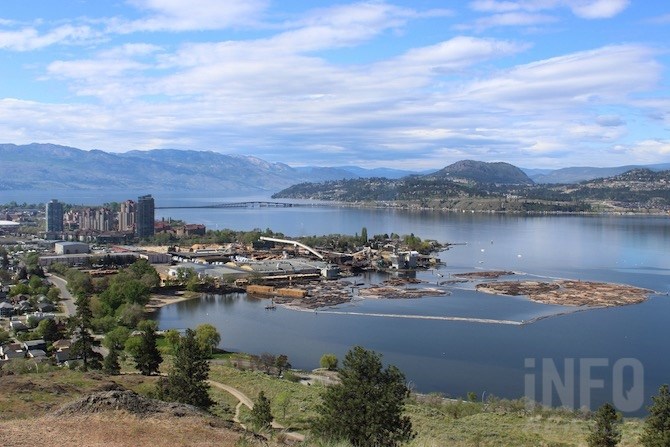
The Tolko mill is one thing preventing more dense development in the North End. But it's cutting from two to one shift in July
(ROB MUNRO / iNFOnews.ca)
“That’s why I like it,” Van Leening said, noting it’s cleaned up its emissions a lot over the last 10 years.
But, Tolko announced recently that it’s cutting one shift from the mill in July, so change may be on its way.
Tell us what you think about the way the North End is changing.

This 696 square foot house was built in 1949 and is typical of many of the older, smaller homes in the North End.
(ROB MUNRO / iNFOnews.ca)

These two North End houses were build in 2006 (left) and 1958.
(ROB MUNRO / iNFOnews.ca)
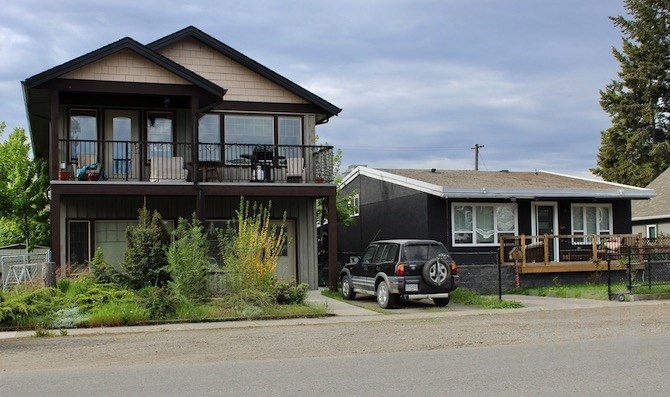
It's not all about brand new houses. The one on the left was built in 2004, the one on the right dates back to 1960.
(ROB MUNRO / iNFOnews.ca)
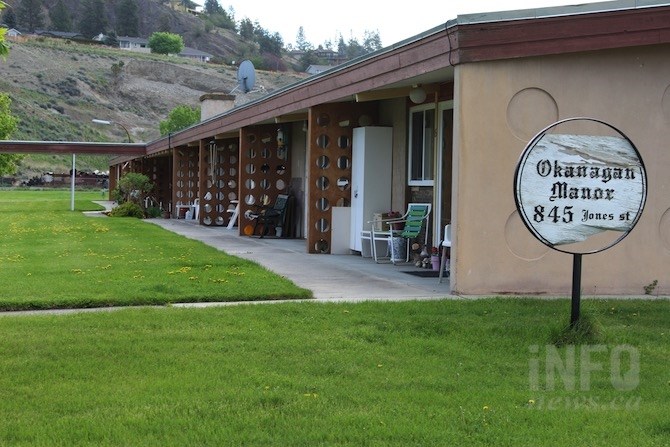
One of the few North End residences that isn't single-family is Okanagan Manor, built in 1966.
(ROB MUNRO / iNFOnews.ca)
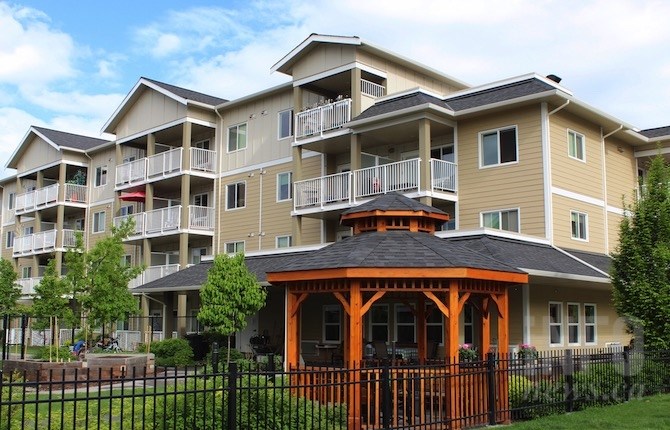
Pleasantvale care facility is an updated version of Okanagan Manor, just finished in the last year or so.
(ROB MUNRO / iNFOnews.ca)
To contact a reporter for this story, email Rob Munro or call 250-808-0143 or email the editor. You can also submit photos, videos or news tips to the newsroom and be entered to win a monthly prize draw.
We welcome your comments and opinions on our stories but play nice. We won't censor or delete comments unless they contain off-topic statements or links, unnecessary vulgarity, false facts, spam or obviously fake profiles. If you have any concerns about what you see in comments, email the editor in the link above.
News from © iNFOnews, 2019